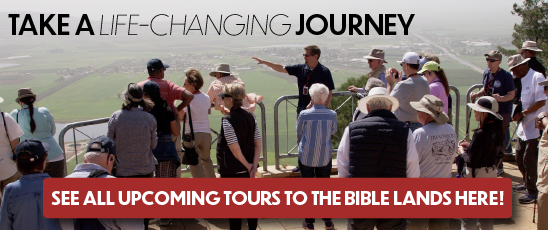No Christian pilgrim who visits Jerusalem misses the Garden of Gethsemane. The small section tourists get to see represents just a portion from the large groves of olive trees that still grace the slopes.
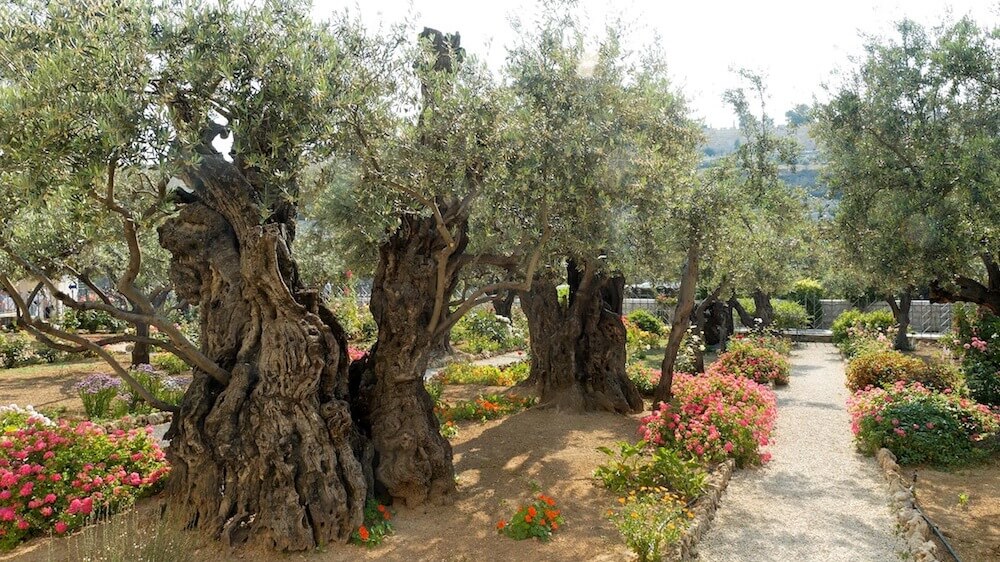
(Photo: The Garden of Gethsemane. Courtesy of the Pictorial Library of Bible Lands)
These olive trees crouch behind the rock walls of the Church of All Nations. Beautifully manicured pathways accent about a dozen ancient trees. These grow behind black handrails to protect the branches from souvenir-snatching visitors.
Today, crowds of Christians shuffle through the tiny garden like cattle through the Fort Worth Stockyards. But centuries ago on the early morning of April 3, AD 33, no Christian would have wanted to be there.
In fact, the few believers who were there scattered like frightened rabbits.
The Location of the Garden of Gethsemane
Tradition points to a place at the base of the Mount of Olives as the site where Jesus and His disciples often met. It lies directly in line with the ancient path where pilgrims descended the slope from Bethany.
The name Gethsemane means, “oil press,” and inside a small cave beside the garden archaeologists have uncovered an ancient press.
- The Byzantines believed this grotto represented the place where Jesus left eight of His disciples while He took three others to pray a short distance away.
- After asking the three to pray, Jesus walked about a “stone’s throw” further to pray alone (Luke 22:41).
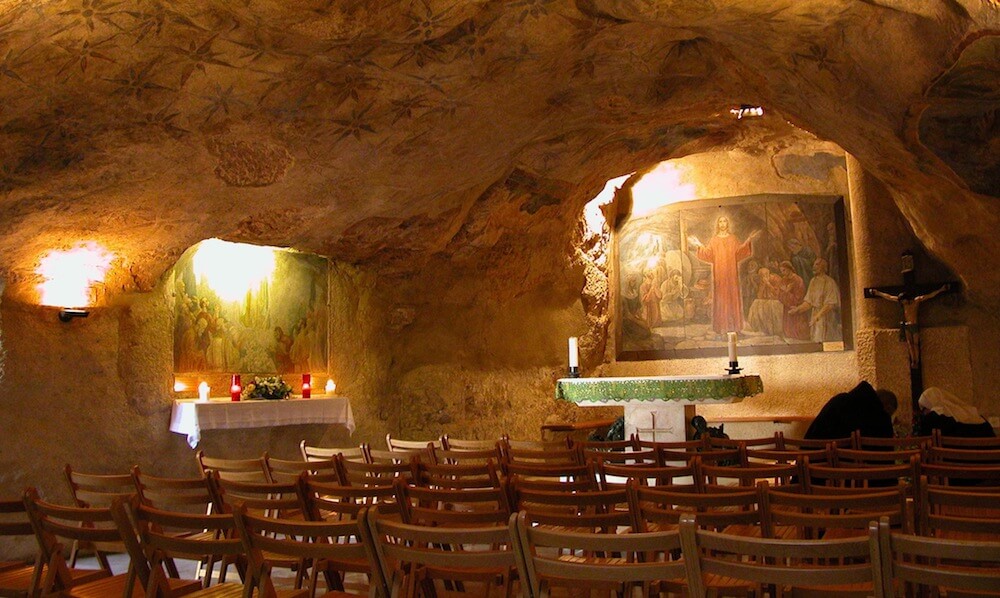
(Photo: Garden of Gethsemane cave. Courtesy of the Pictorial Library of Bible Lands)
The geography of these events is represented in what we see today.
- A short distance from the grotto sits the trees of Garden of Gethsemane where Jesus would have left the three—Peter, James, and John.
- A stone’s throw from these trees stands the beautiful Church of All Nations, which covers the traditional place where Jesus prayed alone in the early morning of His betrayal and arrest.
Churches of the Centuries . . . and of All Nations
Three churches have stood over the site that the earliest Christian community authenticated by their veneration.
- The Byzantines constructed between AD 379 and 384 what Egeria would refer to as an “elegant church.”
- The Crusaders rebuilt the church and expanded it around 1170.
- Today’s Church of All Nations gets its name from the countries that contributed to its construction between 1919 and 1924. Its façade has a beautiful mosaic that depicts Jesus in prayer. Inside, beautiful paintings and a wrought-iron vine of thorns surround a 10-square-foot mass of limestone, called the “Rock of Agony,” the traditional spot where Jesus prayed.
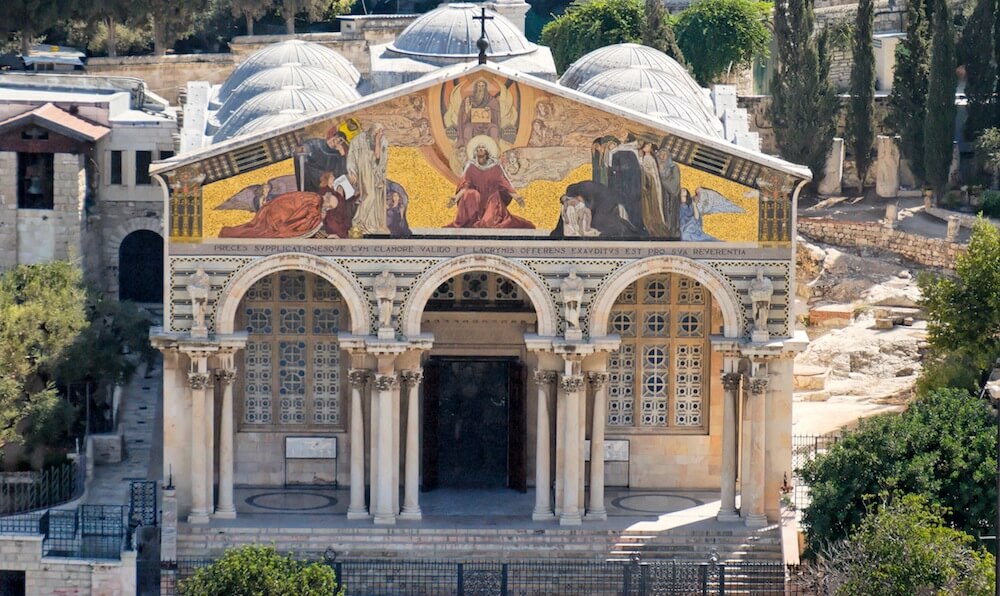
(Photo: The Church of All Nations in the Garden of Gethsemane. Courtesy of the Pictorial Library of Bible Lands)
Ancient Trees Still Grow
Beside the Church of All Nations, about a dozen olives trees stand in a small garden, about 50 feet square, with colorful blooms planted to accent the trees and gravel pathways that surround them.
The massive, gnarled trunks produce new shoots, although the trees themselves are ancient. Olive trees have no rings, so it’s tough to determine their age.
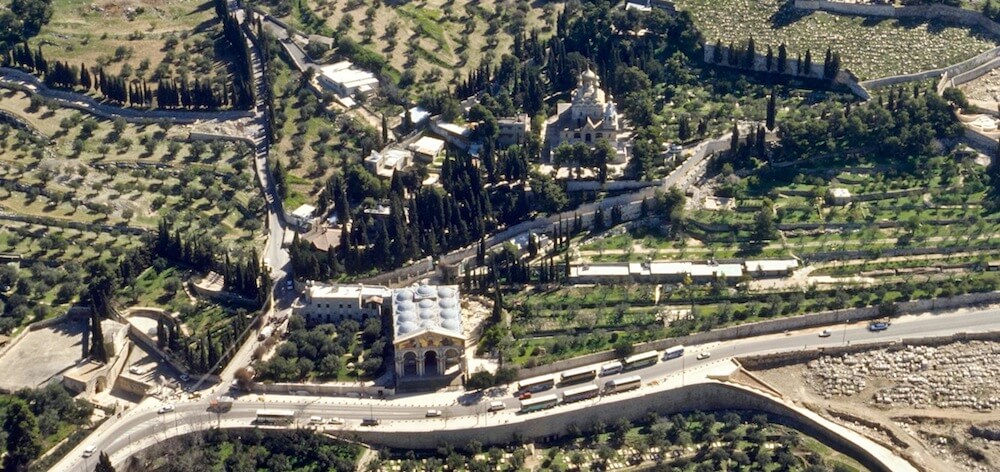
(Photo: Garden of Gethsemane aerial. Courtesy of the Pictorial Library of Bible Lands)
- However, several olive trees in the Garden of Gethsemane date to about 900 years ago according to a recent three-year study by the National Research Council.
- The age of these trees coincide with the time the Crusaders came to Jerusalem. However, the roots of the modern trees go back much further—and may represent the offshoots of the trees from the first century.
- It’s fairly certain that none of the trees standing today ever beheld Jesus in prayer that fateful night. When Titus’ legions needed wood for campfires and for their siege works against Jerusalem in AD 70, Gethsemane’s olive trees would likely have been the first to go. According to Josephus, the legions camped on the Mount of Olives (War 5:2.3).
I Come to the Garden Alone?
The modest Garden of Gethsemane that visitors see is indeed beautiful—just cramped. But a more authentic, unhurried, and private way to experience the garden lies across the street that descends from the Mount of Olives.
After securing permission from the priests, one may enter a vast grove of olive trees much more accessible and touchable. Here a visitor can actually sit on the ground and enjoy an unhurried reading of the story from Matthew 26:30-56.
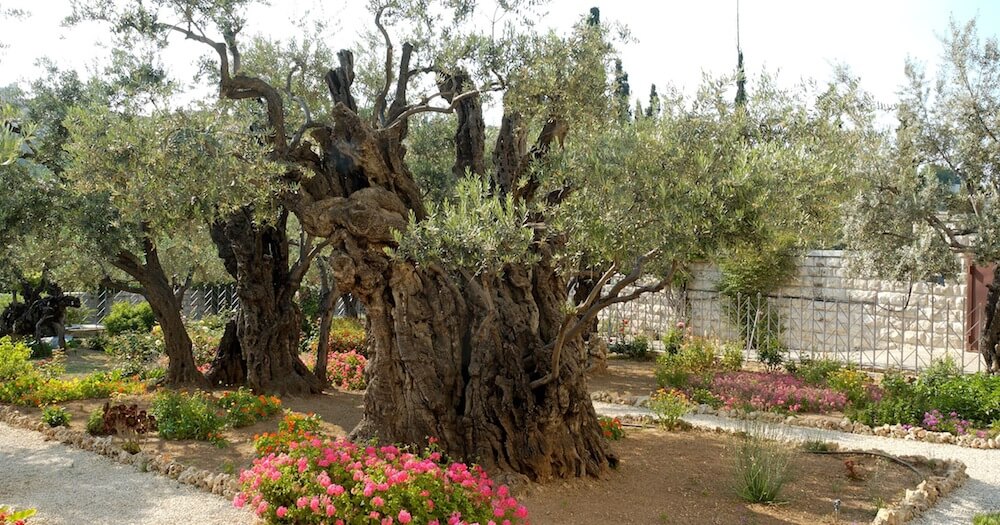
(Photo: Garden of Gethsemane olive trees. Courtesy of the Pictorial Library of Bible Lands)
Jesus prayed and wept alone in the Garden of Gethsemane, choosing to surrender His will to the Father—a decision that would counteract another choice made in another garden.
One time when I was in this more accessible part of the garden, I saw an American tourist wearing shorts, a ball cap, and a 35-mm camera. But this man looked different than a typical pilgrim. All alone, he wandered into a corner beside a massive olive tree.
Unashamed, he stood there for several minutes clinging to a massive, gnarled trunk—and weeping.
See the Garden of Gethsemane & More In Person
Journey to the Bible Lands with Wayne Stiles. You will NEVER be the same! Learn more:
Tell me what you think: Have you ever had a Gethsemane experience? To leave a comment, just click here.

